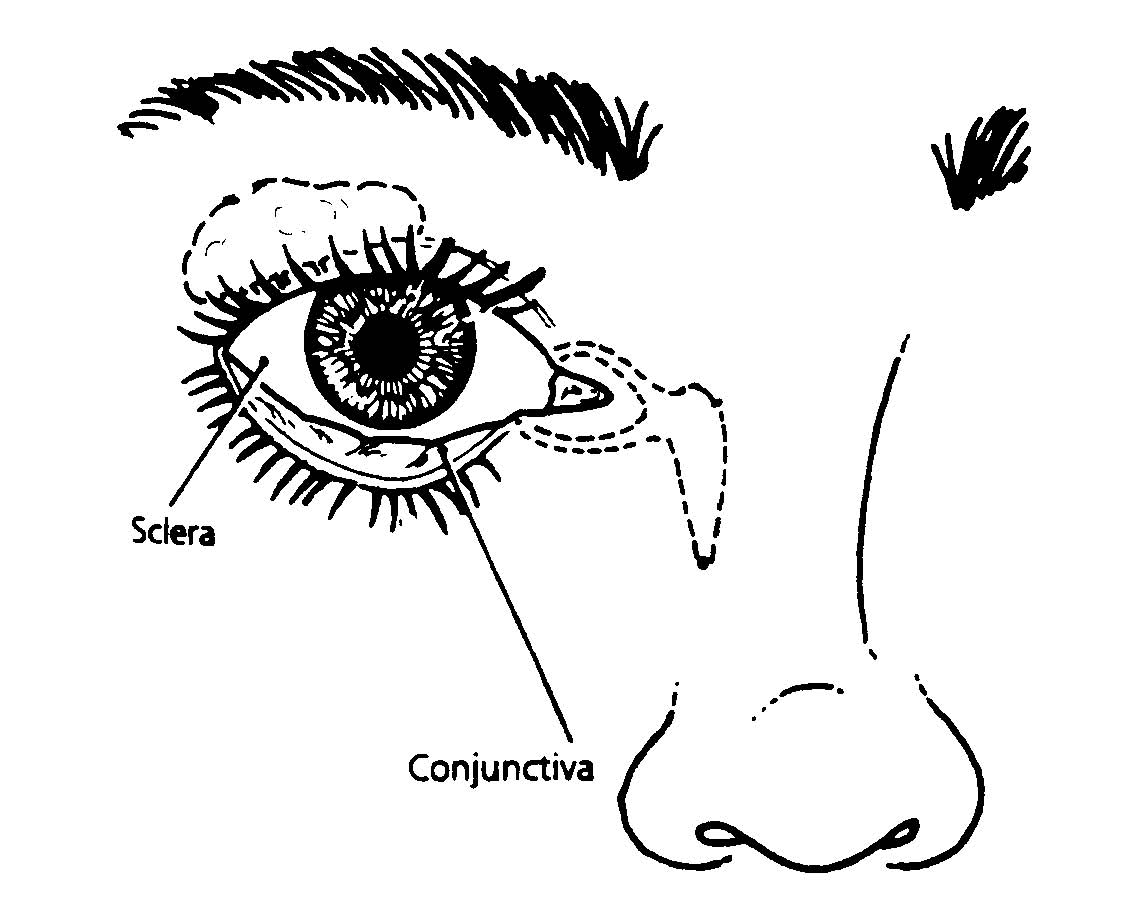Eye, Ear, and Nose Injuries
Lesson 5: Treat Burns of the Eye
5-3
5-3. IDENTIFY CHEMICAL BURNS TO THE EYE
Chemical burns can cause severe injury to the eyes and thus require immediate emergency treatment. These burns can irritate or eat into the tissues if they are not flushed out immediately. Sources of chemical burns are acid, alkali, and petroleum. You should be familiar with the following signs and symptoms:
a. Pain.
b. Watering, tearing of the eye.
c. Chemicals tend to stick to the eye.
d. Redness of sclera/conjunctiva.
(1) The sclera is the outermost layer of the eyeball and is made up of tough, firm, connective tissue (see figure 5-1).
(2) The conjunctiva is the delicate membrane that lines the eyelids and covers the exposed surface of the sclera (see figure 5-1).
e. Possible erosion of the corneal surface.
Figure 5-1. The sclera/conjunctiva of the eye.


